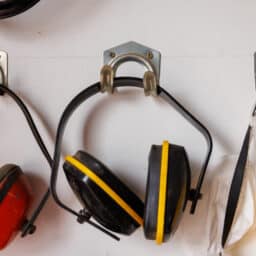Tips for Video Calls with Hearing Aids

With remote work on the rise, more people are participating in virtual meetings. If you wear hearing aids, these steps can help make sure your online calls go smoothly. Optimize Your Technology Take the following steps with your technology to ensure the best experience possible during virtual meetings. Communicate with Your Colleagues Let your coworkers…
Socializing Confidently: Navigating Santa Fe Events with Hearing Aids

Santa Fe, New Mexico, is known for its rich cultural gatherings, including the Santa Fe Indian Market and the International Folk Art Market. These events are perfect for connecting with others, but for those using hearing aids, attending such bustling gatherings can come with challenging background noises. Fortunately, today’s hearing aids can enhance communication and…
How Is a Musician’s Hearing Impacted?

When considering activities that might threaten your hearing, you probably think of loud noises like fireworks or airplanes taking off. However, did you know that playing in a band can also impact your hearing? In fact, some instruments can reach noise levels high enough to cause permanent hearing damage. Noise-Induced Hearing Loss The human ear…
How Can I Manage Anxiety After a Hearing Loss Diagnosis?

In today’s fast-paced world, stress and anxiety have become almost commonplace, making it all too easy for these feelings to overwhelm us. But when you’re also navigating the challenges of hearing loss, the weight of anxiety can feel even heavier. Let’s explore why hearing loss and anxiety are often linked and look at ways to…
How to Advocate for Yourself in Medical Settings with Hearing Loss
For the estimated 48 million Americans living with hearing loss, visiting medical environments can often come with unique challenges. Miscommunications in these settings can have unique consequences, emphasizing the need for clear and direct understanding. Here are four key strategies to help ensure you get the medical attention you need when dealing with hearing loss:…
How Can I Enjoy Football Season with Hearing Loss
Football season is a highlight of fall for many fans, whether you prefer watching from your couch or soaking in the excitement of a live game. If you wear hearing aids or are among the 28.8 million Americans who could benefit from them, you might be curious about how to fully enjoy the games while…
How Can Hearing Aids Help You Enjoy Fall Activities?
Autumn is the perfect time to get outdoors and enjoy the crisp weather and vibrant colors of the season. From visiting pumpkin patches to attending football games, these moments can be less enjoyable when dealing with hearing loss. Fortunately, today’s hearing aids come with advanced technology that helps you stay connected and fully participate in…
How Do Seasonal Changes Affect Your Hearing Aids?

Approximately 28.8 million U.S. adults could benefit from the amplified sound hearing aids offer. When you wear hearing aids, you need to take a few care steps to ensure they continue to bring you the clear communication you need. One aspect of care to consider is how it changes with the weather. Let’s take a…
Why Hearing Protection Is Crucial, Even After Hearing Loss

Hearing loss impacts more than 10% of the United States population. Many people see hearing loss as a one-time event, but that isn’t the case at all. Your hearing loss can grow from mild to profound over time, underscoring the need for hearing protection. It’s never too late to start protecting your hearing for the…
Safe Driving with Hearing Loss: Tips and Precautions

Hearing loss affects approximately one out of every 10 people in the United States. When you’re diagnosed with hearing loss, it’s natural to worry about how it might affect your independence, especially when it comes to driving. This concern is valid, as navigating the world requires hearing and vision. The good news is that with…
